Papaya (Carica papaya), often called the “fruit of angels,” is one of the most economically important and nutritionally valuable tropical fruits in India. With its fast growth, early fruiting, and year-round production, papaya has become a favorite among Indian farmers. Today, India is the largest producer of papaya in the world, accounting for nearly 40% of global production.
But not all parts of the country grow papaya equally. Some states have become standout leaders due to their favorable climate, soil conditions, government support, and modern cultivation practices. This article takes a comprehensive look at the top papaya-growing states in India, highlighting their production capacity, key regions, best practices, and contribution to the national economy.
Why Papaya Farming Thrives in India
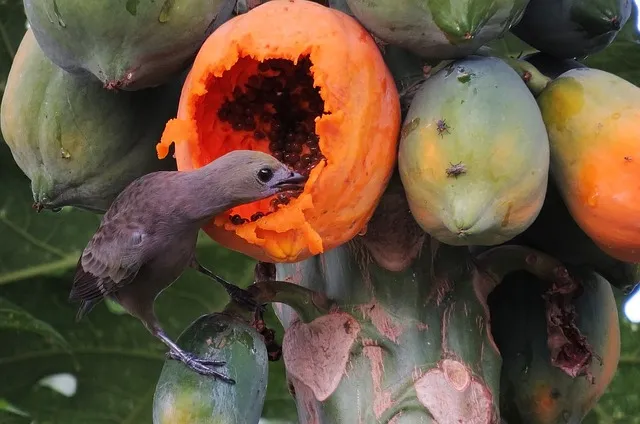
Before exploring state-specific data, it’s important to understand why papaya is such a successful crop in India:
- Tropical and subtropical climate ideal for year-round cultivation
- Short gestation period – fruiting begins within 6–8 months
- High productivity – a single tree can produce 30–150 fruits annually
- Low cost of cultivation compared to many other fruits
- High demand in domestic and export markets for fresh fruit, pulp, and medicinal use
India’s climate diversity allows papaya to be cultivated in plains, river valleys, coastal belts, and even semi-arid zones, making it one of the most adaptable fruit crops in the country.
1. Andhra Pradesh – The Leading Papaya Producer
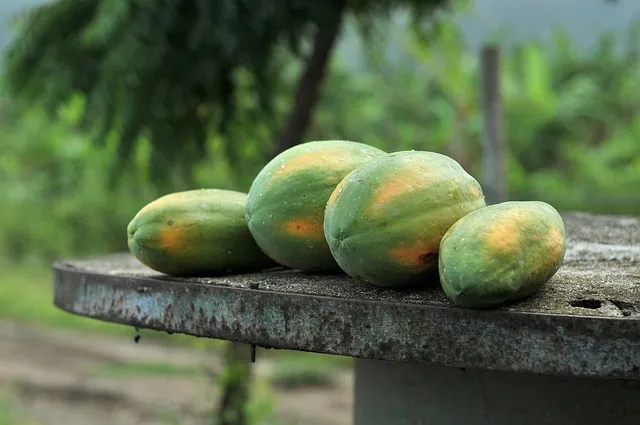
Production Rank: 1st in India
Key Districts: Anantapur, Chittoor, Kurnool, Kadapa, East & West Godavari
Andhra Pradesh consistently ranks as the top papaya-producing state in India, contributing over 20% of the national output.
Why Andhra Pradesh Leads:
- Favorable climate and well-drained loamy soils
- Large-scale commercial orchards
- Strong government support under the National Horticulture Mission
- Excellent market linkages and export channels
The state grows improved varieties like Red Lady, Coorg Honey Dew, and Tainung-1, which are disease-resistant and high-yielding. Farmers use modern drip irrigation and fertigation systems, boosting quality and output.
2. Maharashtra – Innovation-Driven Growth
Production Rank: 2nd in India
Key Districts: Pune, Solapur, Nashik, Ahmednagar, Jalgaon
Maharashtra is a powerhouse in Indian horticulture and papaya is no exception. The state contributes around 15–18% of India’s papaya production.
Key Features:
- Adoption of precision farming and high-density planting
- Use of greenhouse nurseries for healthy saplings
- Encouragement of organic papaya cultivation
- Strong processing industry for papaya pulp and dried fruit
The Red Lady Taiwan variety is widely cultivated, known for its sweet taste, attractive color, and export potential.
3. Karnataka – Papaya with a Purpose
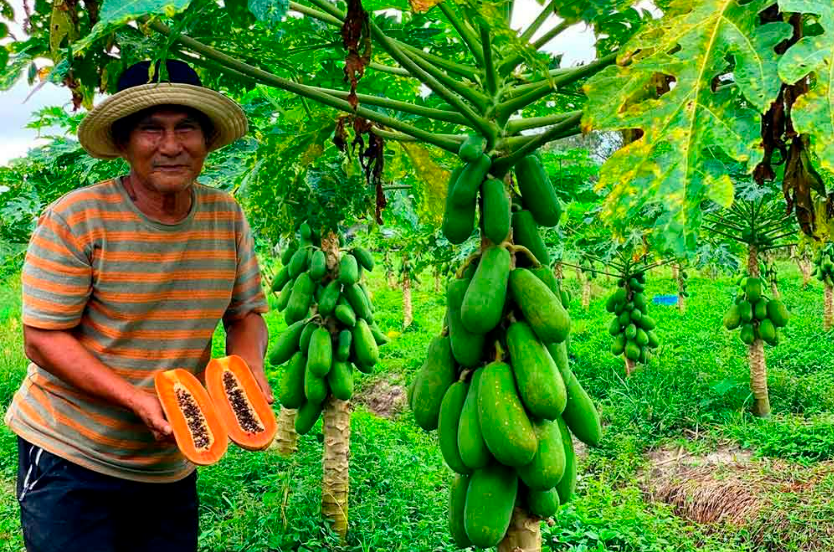
Production Rank: 3rd in India
Key Districts: Chikkaballapur, Tumakuru, Bengaluru Rural, Kolar, Mandya
Karnataka has emerged as a major papaya-growing state due to its:
- Agro-climatic diversity
- Extensive horticultural extension services
- Promotion of organic farming models
Papaya cultivation is highly profitable in Karnataka due to the steady market demand in Bengaluru and surrounding urban hubs. The state also exports papaya to the Middle East through air cargo terminals in Bengaluru.
Farmers often intercrop papaya with vegetables or pulses to maximize land productivity and income.
4. Gujarat – Desert Turns Green
Production Rank: 4th in India
Key Districts: Surat, Navsari, Valsad, Bharuch, Anand
Despite being semi-arid in many regions, Gujarat has become a significant contributor to India’s papaya output, thanks to:
- Investment in micro-irrigation systems
- Use of salt-tolerant hybrid varieties
- Progressive farmer training programs
The government supports horticultural clusters and farmer producer organizations (FPOs) that enhance efficiency and marketing. Surat and Navsari are hubs of commercial cultivation, often supplying North Indian markets.
5. Tamil Nadu – Year-Round Production
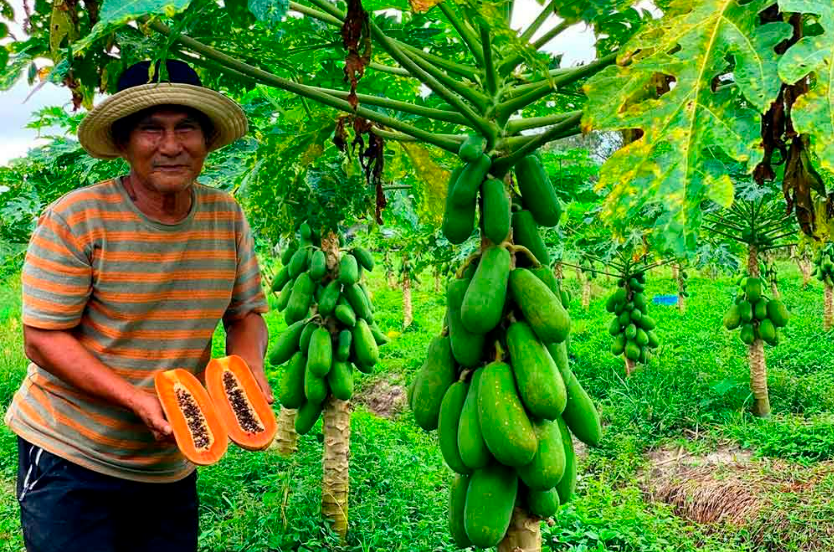
Production Rank: 5th in India
Key Districts: Erode, Salem, Namakkal, Krishnagiri, Villupuram
Tamil Nadu’s warm climate allows farmers to cultivate papaya year-round. The state is known for:
- High survival rates of saplings due to nursery innovation
- Promotion of drip irrigation with mulching
- Strong domestic demand in cities like Chennai and Coimbatore
Papaya is also grown as a backyard crop in southern districts, ensuring steady household income and nutritional security.
6. West Bengal – Rising in the East
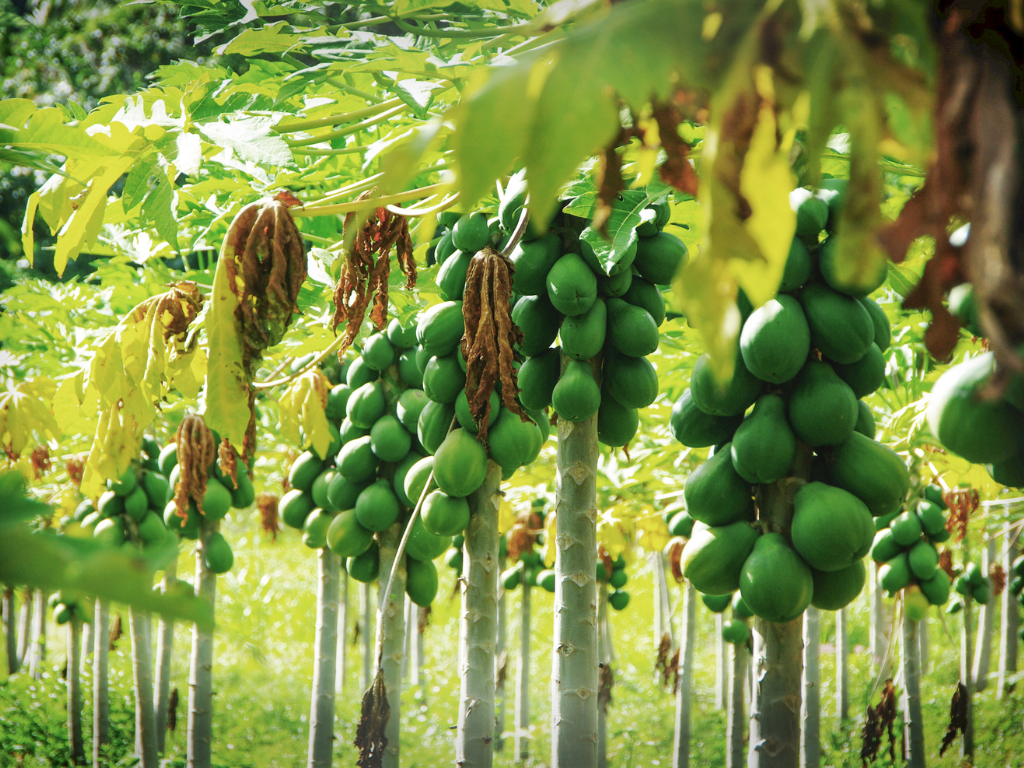
Production Rank: 6th in India
Key Districts: Nadia, Murshidabad, Malda, Hooghly
West Bengal is quickly increasing its share in India’s papaya production. The state’s humid climate and rich alluvial soil favor rapid growth and large fruit size.
Features of West Bengal’s papaya industry:
- Intercropping systems with banana, turmeric, and legumes
- Cooperative marketing models
- Increasing shift toward high-yielding hybrids
Urban markets in Kolkata ensure stable demand and good returns for farmers.
7. Uttar Pradesh – The Northern Frontier
Production Rank: 7th in India
Key Districts: Prayagraj, Varanasi, Lucknow, Kanpur, Gorakhpur
Despite its relatively temperate climate, Uttar Pradesh is a major papaya producer, especially in the eastern and central belts. The state has:
- Year-round markets for ripe fruit
- State-run horticultural promotion programs
- Papaya used extensively in local medicine and cooking
In some areas, papaya farming has become an alternative to traditional sugarcane or wheat cultivation due to higher profit margins and lower water needs.
8. Chhattisgarh and Odisha – The Hidden Champions
These eastern states are emerging as promising papaya growers thanks to:
- Rich, organic-matter-rich soils
- Government schemes for tribal area development
- Low pest pressure, reducing chemical use
Papaya is grown both as a cash crop and a nutrition crop, especially in tribal and forest-fringe villages.
Popular Papaya Varieties in India
The top varieties grown in India include:
- Red Lady (Taiwan 786) – High yield, sweet taste, disease-resistant
- Coorg Honey Dew – Large fruit, longer shelf life
- Pusa Delicious – Developed by IARI, suitable for Northern India
- Arka Surya and Arka Prabhat – Developed by IIHR, excellent for commercial orchards
- Washington and Ranchi Local – Indigenous and used in specific pockets
Farmers often choose varieties based on market demand, climate compatibility, and resistance to viral diseases like papaya ringspot virus (PRSV).
Government Support and Schemes
Several initiatives are boosting papaya cultivation across Indian states:
- MIDH (Mission for Integrated Development of Horticulture)
- State horticulture missions with nursery and drip subsidies
- Crop insurance and price support schemes
- Support for packaging, grading, and cold storage facilities
In Maharashtra and Gujarat, farmer-producer groups are receiving aid to set up processing units for papaya pulp, dried fruit, and papaya-based cosmetics.
Challenges in Papaya Farming
Despite its success, papaya cultivation faces a few roadblocks:
- Papaya ringspot virus (PRSV) can devastate entire plantations
- Poor post-harvest handling, leading to fruit damage
- Fluctuating market prices and middlemen exploitation
- Lack of access to cold chains and distant markets for small farmers
However, with better training, disease-resistant varieties, and technology use, these challenges are being addressed progressively.
Future of Papaya Cultivation in India
The road ahead looks promising for papaya farming in India. Trends such as:
- Organic cultivation
- Export-ready varieties
- Digital farmer networks
- Contract farming by juice and pulp manufacturers
…are making papaya cultivation more sustainable, profitable, and market-oriented.
With consumer demand for health-rich fruits increasing both domestically and globally, India’s papaya-producing states are likely to become export powerhouses in the near future.
Conclusion
From the tropical belts of Andhra Pradesh to the riverine plains of Uttar Pradesh, papaya is transforming rural livelihoods and diversifying India’s fruit economy. Each state contributes uniquely—with innovation, scale, or sustainability—to make India the global leader in papaya production.
By continuing to support scientific cultivation, marketing reforms, and export facilitation, these top papaya-growing states can further unlock the full potential of this nutrient-rich, farmer-friendly fruit.



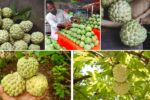



Leave A Comment